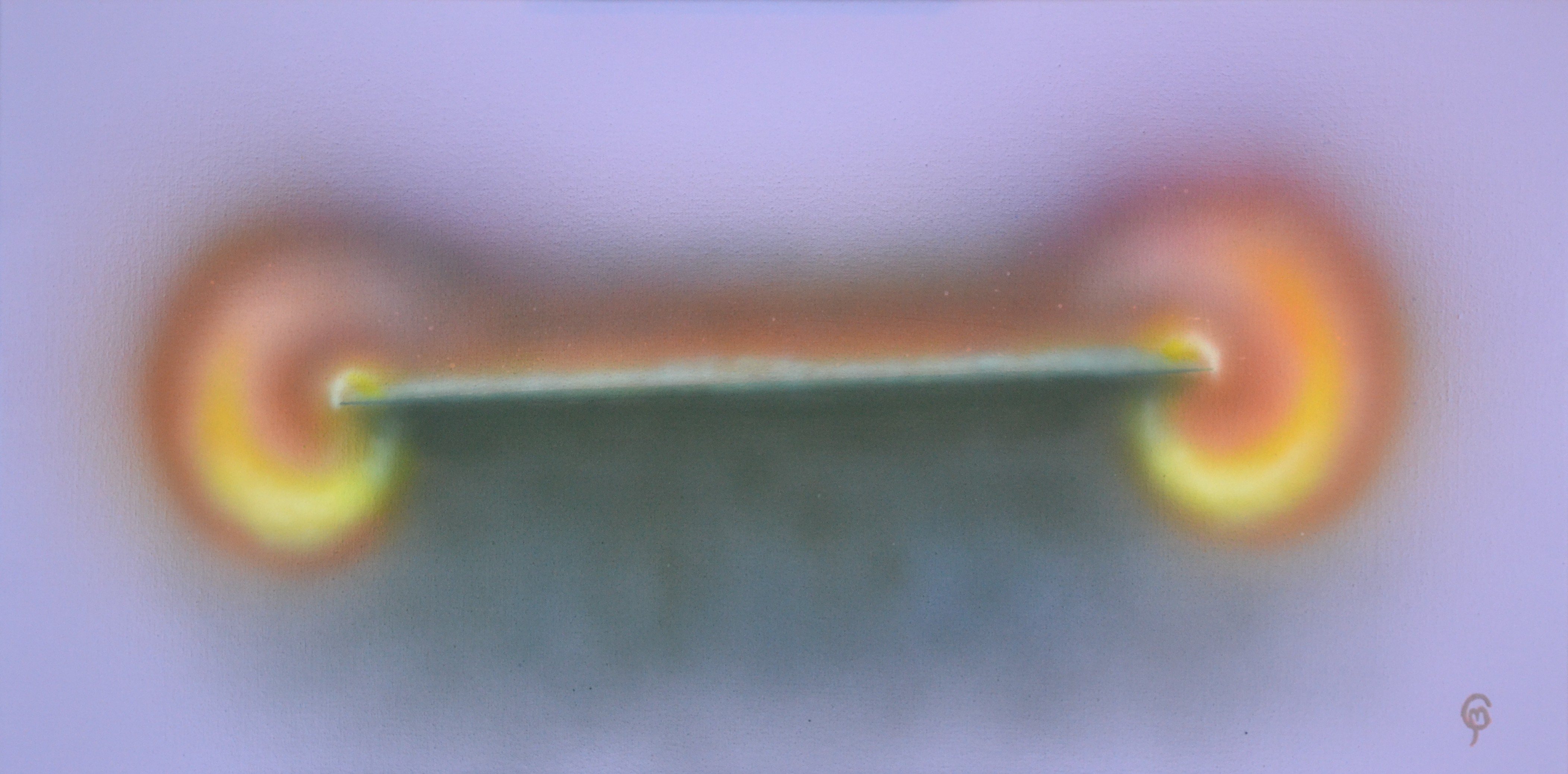Wing Tip 3
Acrylic on canvas
37" X 19"

Aircraft wings create lift by pressing air downward underneath, and pulling air flowing over the wing downward to meet it, creating a pattern of high pressure under the wing and low pressure over it. At the wing tip, however, the physical barrier (the wing, itself) between these low and high pressure regions disappears. High-pressure air from under the wing rushes up to the low-pressure area above, creating a vortex pattern attached to the wing tip.
The wing, however, moves rapidly forward, out of the vortex pattern and into the more-or-less stationary air ahead. The situation repeats as the the wing forces more undisturbed air downward, creating new regions of high and low pressure, and extending the vortex pattern.
In the end, the whole pattern of disturbed air has sheets moving downward across the entire wing’s width, with long vortices corkscrewing off the wing tips and trailing behind. From a vantage point ahead of the wing, the viewer sees a broad downwash across the wing, with rams-horn-shaped vortices corkscrewing from the wing tips.
As time goes on, viscosity of the air spreads angular momentum from the wing-tip vortices away from the center, dissipating it through the atmosphere.